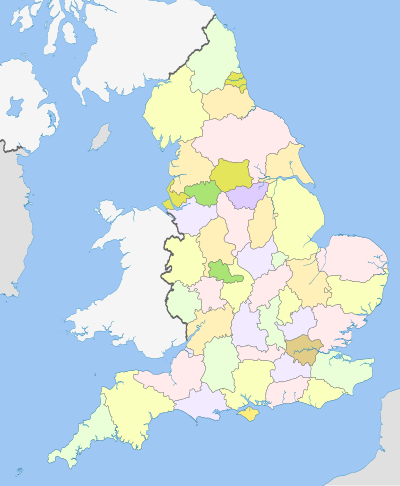| Ceremonial counties of England and shrieval counties of England | |
|---|---|

Not shown: City of London
| |
| Location | England |
| Number | 48 |
| Populations | 8,000 (City of London) to 8,167,000 (Greater London)[1] |
| Areas | 3km² to 8,611 km² |
| Densities | 62/km² to 4,806/km² |
Ceremonial counties,[2] formally known as counties for the purposes of the lieutenancies,[3] are areas of England to which lord-lieutenants are appointed. They are one of the two main legal definitions of the counties of England in modern usage, the other being the counties for the purposes of local government legislation. A lord-lieutenant is the monarch's representative in an area.[4] Shrieval counties have the same boundaries and serve a similar purpose, being the areas to which high sheriffs are appointed. High sheriffs are the monarch's judicial representative in an area.[5]
The ceremonial counties are defined in the Lieutenancies Act 1997, and the shrieval counties in the Sheriffs Act 1887. Both are defined as groups of local government counties.
- ^ Table 2 2011 Census: Usual resident population and population density, local authorities in the United Kingdom UK Census 2011 UK usual resident population Greater London excluding City of London
- ^ "Ceremonial Counties" (PDF). Ordnance Survey. Retrieved 29 November 2023.
- ^ Cite error: The named reference
sched_1was invoked but never defined (see the help page). - ^ "Document (01) The Lord-Lieutenant". council.lancashire.gov.uk. 29 November 2023. Retrieved 29 November 2023.
- ^ "High Sheriff of Lancashire". www.highsheriffoflancashire.co.uk. Retrieved 29 November 2023.